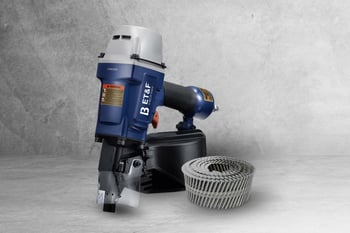Understanding Light Gauge Steel Framing
Light gauge steel framing is a construction method that uses thin steel sheets to create a framework for buildings. It is an alternative to traditional wood framing and offers several advantages. Understanding the basics of light gauge steel framing can help you make informed decisions for your construction projects.
framing can help you make informed decisions for your construction projects.
Light gauge steel framing involves the use of cold-formed steel sections that are lightweight but strong. These steel sections are typically made from galvanized steel, which is resistant to corrosion and offers excellent durability. The steel sections are assembled using screws, bolts, or welding, depending on the specific design requirements. ET&F® (a Beck brand) has many fastening options for light gauge steel construction. Let’s explore some of the benefits of building with light gauge steel.
Durability and Strength
One of the key advantages of light gauge steel framing is its durability and strength. Unlike wood, steel is not susceptible to rot, termites, or warping. It can withstand extreme weather conditions, such as hurricanes and earthquakes, making it a reliable choice for buildings in areas prone to natural disasters. Additionally, steel framing provides excellent structural integrity, ensuring that the building remains stable and secure.
Steel is a highly durable material that can last for decades without significant deterioration. It does not require frequent repairs or replacements, saving you time and money in the long run. Steel is also resistant to fire, reducing the risk of damage and increasing safety. Its strength allows for the construction of taller and larger buildings, offering greater design flexibility.
Moreover, steel framing is not affected by moisture or humidity, which can cause wood to expand or warp. This ensures that the building maintains its structural integrity over time. Steel is also resistant to pests, such as termites, which can cause extensive damage to wood framing. By choosing light gauge steel framing, you can ensure that your building remains strong and durable for years to come.
Cost-Effectiveness
While the initial cost of light gauge steel framing may be higher than wood framing, it offers long-term cost savings. Steel is a low-maintenance material that does not require frequent repairs or replacements. Its resistance to rot, pests, warping, and fire reduces the need for costly repairs and lowers insurance costs.
Steel is also a highly durable material that can last for decades without significant deterioration. This means that you won't have to spend money on frequent replacements or renovations. Moreover, steel is recyclable, making it an environmentally friendly choice. By choosing light gauge steel framing, you can contribute to sustainability efforts and reduce construction waste.
Design Versatility
Light gauge steel framing offers excellent design versatility, allowing architects and builders to create unique and innovative building designs. Steel sections can be easily customized and shaped to meet specific design requirements. This flexibility opens a wide range of design possibilities, from curved walls to complex geometries.
Steel framing also offers clear span capabilities, meaning that large open spaces can be achieved without the need for additional support columns. This allows for greater design freedom and increases usable space. The strength and stability of steel framing enables the construction of taller and larger buildings, offering architects more options for their designs.
Moreover, steel framing can be combined with other building materials, such as glass and concrete, to create striking architectural features. The combination of steel and glass, for example, can result in modern and aesthetically pleasing buildings. Steel framing also allows for the integration of sustainable design elements, such as solar panels and green roofs.
Energy Efficiency
Energy efficiency is a crucial consideration in modern construction. Light gauge steel framing offers excellent thermal performance, helping to reduce heating and cooling costs. Steel has a high thermal conductivity, allowing it to efficiently transfer heat. Additionally, steel framing can accommodate insulation materials, further enhancing energy efficiency.
By using light gauge steel framing, you can create buildings that are well-insulated and energy efficient. This not only reduces energy consumption and lowers utility bills, but also contributes to environmental sustainability. Steel framing can help to create a comfortable indoor environment by minimizing heat loss or gain, ensuring a consistent temperature throughout the building.
Furthermore, steel is a durable material that does not degrade over time, maintaining its thermal performance throughout the lifespan of the building. Unlike wood, steel is not affected by moisture or humidity, which can reduce the effectiveness of insulation. This ensures that the building remains energy-efficient for years to come.
Light gauge steel framing’s long-term benefits make it a superior choice for construction projects. Whether fastening interior cladding to steel, fiber cement cladding to steel studs or floor and roof formwork to steel – we have the right fastening systems and solutions for you!
ET&F® tools and fasteners score big with adjustable depth control that allows even the softest materials to be fastened to steel without over driving the fasteners. Discover more about our products for the light gauge steel construction industry by clicking the button!
.svg.png)

